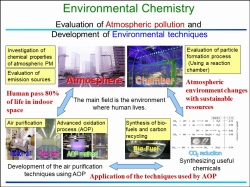Research field
Molecular Design and Functional Expression: Organic Material Chemistry and Process Engineering
We have been studying new technologies for organic synthesis and their application to highly functionalized organic materials. For example, synthesis and use of optically active molecules and organometallic compounds, and the development of liquid crystalline materials, liquid crystalline charge transporting materials, and functional dyes responding to external stimuli such as chemical materials and electromagnetic waves are now in progress. Also, our attention is focused on process simulations of material production supporting for the design of droplet formation systems, plastics molding, nuclear reprocessing plants, and so on.
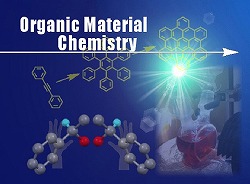
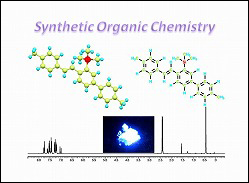
Development of Novel Methodology for Analytical Chemistry and Physical Chemistry
Our research is aimed at developing new methods to find unknown chemical species and highly functional molecules by separation approach, and to obtain information about the structures and physicochemical properties of chemical species by unique spectroscopic methods.
We are focusing efforts on the following research projects in the field of analytical chemistry: developing unique separation methods to find novel DNA aptamers and humic substances, developing new concepts for chemical separation using crystalline coordination polymers, and designing supramolecular luminescent chemosensors.
Our research also focuses on spectroscopic physical chemistry. In particular, we are trying to develop original advanced spectroscopies for interfacial molecules and biomolecules. We have already developed Single-Channel Heterodyne-Detected Sum Frequency Generation Spectroscopy that has the best spectral resolution with interface selectivity and phase sensitivity. We are also making efforts on the development of novel fluorescence correlation spectroscopy that can be a powerful tool for elucidating the complex dynamics of biomolecules such as proteins. In addition, we are focusing on researches of morphology and molecular arrangement of organized films prepared at the air/water interface.
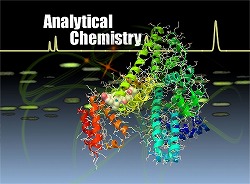
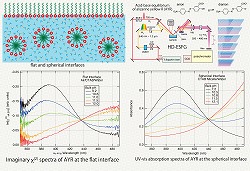
Polymer chemistry and Biological chemistry
Based on organic chemistry, inorganic chemistry and molecular biology, we research and develop for interdisciplinary area in view of chemistry and biology, such as chemo and biosensors, diagnostic systems and artificial functionalized proteins, and gene expression system. Particularly, we are focusing on synthetic studies of functional glycomaterials with molecular recognition ability, visualization tools for virus occurrences, live imaging with non-invasive molecular sensors, development of drug delivery system, generation of useful plants by using genome editing system.
Matsuoka and Hatano Lab
Research Interests
Synthetic studies of functional compounds based on carbohydrates. Design, synthesis, and biological evaluation of new class of glycomaterials. Chemical modifications of polysaccharides. Development of immediate diagnostic kits in clinical settings and establishment of virus detection methods utilizing antibodies and peptide aptamers on the basis of organosilicon chemistry, organometallic chemistry, and aggregation-induced luminescent substances.
Key Words
Carbohydrates, Organic Chemistry, Synthetic Chemistry, Biochemistry, Polymer Chemistry, Glycoconjugates, Sugar, Carbohydrate Chemistry, Peptide Chemistry, Glycoproteins, Glycolipids, Glycoclusters, Glycodendrimers, Glycopolymers, Biopolymers, Polysaccharides, Oligosaccharides, Monosaccharides, Anti-Virus Drugs, Toxin Neutralizer, Enzyme Mimetics, Enzyme Inhibitors, Cyclodextrins, Bioactive Natural Products, Enzyme, Proteins, Lipids, Virus, Toxins, Hormones, Lectins, Diagnostic kits, Virus detection, Antibodies, Peptide aptamers, Organosilicon chemistry, Organometallic chemistry, Aggregation-induced luminescent substances.
Suzuki and Yamaguchi Lab
Research Interests
Development of fluorescence-based sensor molecules for live imaging and microfluidics. Manufacture of drug delivery system. Identification of DNA sequences binding to transcription factors. Generation of useful plants.
Key words
Chemical biology, Green Fluorescent Protein, Organic dye, Quantum dot, Live Imaging, Molecular sensor, Fluorescence Resonance Energy Transfer (FRET), Fluorescence lifetime, Microfluidics, Drug delivery system (DDS), Aggregation induced emission compounds (AIE compounds), Theranostics, Biopharmaceutical, Quasi-drugs, Environmental pollutants, Protein-DNA interaction, Protein-protein-interaction, DNA cis-sequence, Gene expression, Transcription factors, Fatty acids, Molecular genetics.
Catalysis: Driving Sustainable Progress
Our laboratory aims to build a sustainable society by developing high-performance catalysts to utilize green energy and effectively use resources. Recently, we have been focusing on electrochemical molecular transformations. Electrochemical processes are promising as clean synthesis processes because they (1) proceed at room temperature and pressure, (2) do not require oxidizing or reducing agents, and (3) can use electricity derived from renewable energy sources. We are particularly interested in membrane/electrode assemblies (MEAs), which are integrated electrolysis devices combining electrode catalysts and solid electrolytes. Recently, we succeeded in the dehydrogenation of alcohols using MEAs, achieving the synthesis of aldehydes, esters, and acetals. We are actively working to expand these processes to a broader range of molecular transformations.
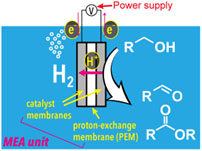
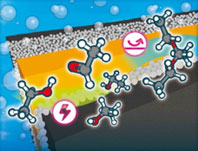
Environmental chemistry
We are engaged in research and development from a chemical perspective, aiming to elucidate the circulation mechanisms of hazardous chemicals in the environment and control environmental pollution, targeting everything from the enormous global environment to human living spaces. Specifically, we aim to improve the sustainability and comfort of the environment in which humans live, by elucidating the behavior of hazardous chemicals in the environment and evaluating their health risks, measuring and controlling particulate matter (PM2.5, PM0.1), Chemical decomposition of harmful chemicals (Complete mineralization), and reductive converting carbon dioxide into useful chemicals.



